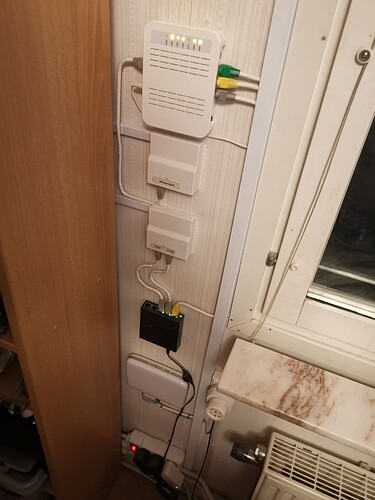Sorry I wasn’t specific enough - I was looking at the main (16-24 port) switch first as they are much more expensive and would dictate how the total budget is spent. Yes, I looked at that model too and I have to admit that it still has a place on my list, although I really would like to spend less than that.
While it would be fine as my 2nd switch (desktop), I still need the main 16+ port switch and it’s 24 port version is $270 (and it was over $300 when I looked it last time, so it definitely was a factor for me). There is no 16 port version for these series. So 2 switches for ~$420 plus tax and I haven’t touched the router yet. Yes, they are something I should probably consider 
Can you confirm that the reviews like this are not factual? I value my privacy. And I want to be able to mange the switch without the cloud.
But I absolutely cannot support using a network device that requires me to create a Netgear cloud account to log into the device locally and manage it. Every single time you try to log into your switch, you will have to put in your cloud Netgear credentials, if you don’t you will only be shown the IP of the switch and its MAC address.
and
Upon upgrading the firmware I was presented with two choices: either register the device and get all the features one would expect of a managed switch or not register it and use is as a unmanaged switch that one can get for half the price.
Here is price comparison between Netgear, Zyxel, TP-Link and TRENDnet:
Netgear:
GS724TP (24 ports, 2 SFP ports, POE+), ~$270
GS110TP (8 ports, 2 SFP ports, POE+), ~$150
About $420 plus tax for Netgear switches.
Zyxel:
GS1900-24HP (24 ports, 2 SFP ports, POE+), ~$250
GS1900-10HP (8 ports, 2 SFP ports, POE+), ~$140
About $390 plus tax for Zyxel switches.
TP-Link:
TL-SG1218MPE (16 ports, 2 SFP ports, POE+), ~$200
or
T2600G-28MPS (24 ports, 4 SFP ports, POE+), ~$270
and
TL-SG2210MP (8 ports, 2 SFP ports, POE+), ~$150
About $350-$420 for TP-Link switches.
TRENDnet:
TPE-1620WS (16 ports, 2 SFP ports, POE+), ~$300
TPE-082WS (8 ports, 2 SFP ports, POE+), $120
About $420 for TRENDnet switches.
And finally, since there is probably no chance whatsoever that I will have a fiber here in rural area in the next 10+ years, should I look at some cheaper non-SFP choices? Some might be POE instead of POE+, but I can live with that.

